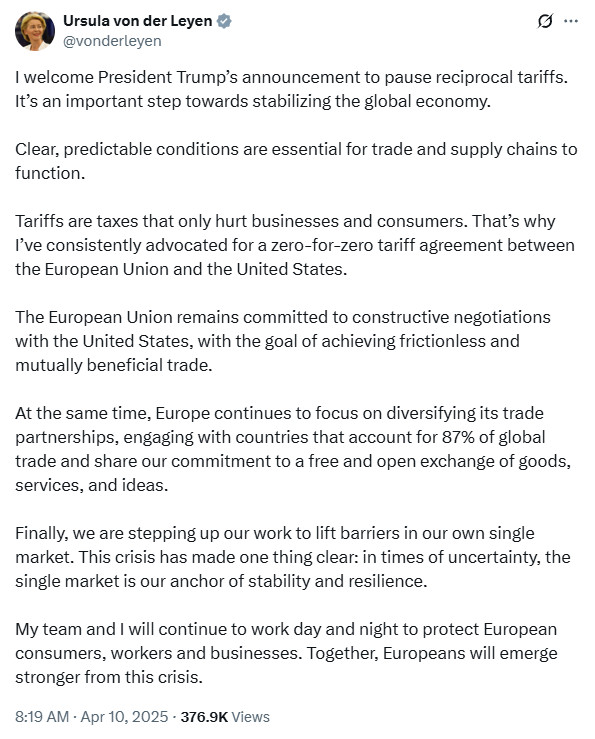Trump’s Tariff Moves: A Hard Start in the New Era
On April 2, Donald Trump announced a 10% “basic tariff” on all imports, to take effect on April 5, and higher tariffs will be imposed on countries with a trade surplus with the US from April 9. In this context, the additional tariffs set for some countries are as follows:
- China: 34
- European Union (EU): 20%
- South Korea: 25%
- Japan: 24
- Taiwan: 32
EU Retaliation: €26 Billion Tariff Package
On April 9, European Union member states approved retaliatory tariffs of 25% on various products imported from the US worth €26 billion, including almonds, orange juice, poultry, soybeans, tobacco, yachts, and steel and aluminum, in response to the 25% tariffs imposed by the US on steel and aluminum imports from the EU.
The Negotiation Process and the 90-Day Pause
In response to strong reactions from both the domestic public and the recipient countries, the Trump administration authorized a 90-day temporary pause to negotiate tariffs. During this period, all tariffs were mutually fixed at 10%.
EU Response and Diplomacy Message: Reprisals Suspended
After the US backtracked on tariffs, the European Union suspended retaliatory measures for 90 days. European Commission President Ursula von der Leyen said in a statement on X:
“I welcome President Trump’s decision to temporarily pause the tariffs. This is an important step to stabilize the global economy. Clear and predictable conditions are essential for trade and supply chains to function properly. Tariffs are a taxation tool that only hurts businesses and consumers. That is why I have consistently advocated for a zero-tariff trade agreement between the European Union and the United States.”

The State of Trade Relations: Tension and Optimism Side by Side
Trump’s aggressive tariffs under the “reciprocal trade approach” have led to tensions with global trading partners and rapidly evolving retaliatory measures. However, temporary exemptions have been granted in some sectors, signaling negotiations between the parties. In light of the ongoing negotiations, a mutually agreeable and reasonable solution seems possible.
In sum, while tensions remain high in trade relations between the United States and the European Union, the search for diplomatic solutions continues actively. The talks that will take place in the coming weeks will be decisive for the future of transatlantic trade.














